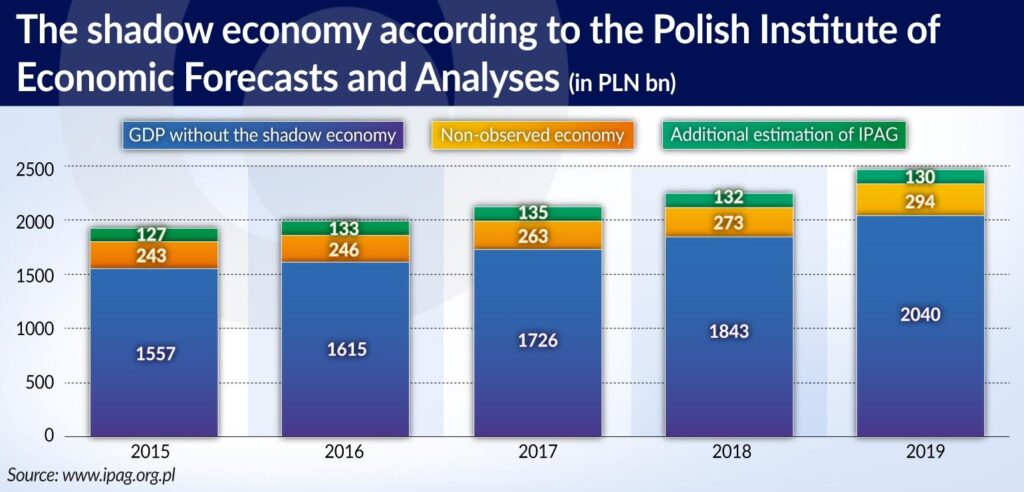Visualizing the Scope of Each Nation’s Informal Economy
In the complex landscape of global finance, one often neglected aspect is the informal economy—a vast network of unregulated transactions and undisclosed earnings that coexist with official markets. As calls for transparency and regulation grow louder, this hidden sector continues to flourish, presenting both challenges and opportunities for governments, businesses, and individuals. Recent research from Visual Capitalist reveals that this underground economy constitutes a substantial fraction of total economic activity in numerous countries, with some nations facing informal sectors that represent over a third of their GDP. This article examines the insights from this enlightening report, focusing on the scale of each nation’s informal economy, its effects on national development, and what these statistics indicate about economic resilience in an ever-changing financial environment.
The Global Influence of Informal Economies on Nations
The existence of informal economies presents ongoing challenges for governments and policymakers around the globe. Defined by economic activities not reported to authorities, these unregulated sectors can lead to significant discrepancies in national economic data—often resulting in an underappreciation of a country’s actual economic power. Key consequences include:
- Tax Losses: A considerable amount of potential tax income is forfeited as individuals and enterprises operate outside formal regulations.
- Employment Challenges: Numerous workers find themselves in unofficial arrangements devoid of legal protections, which deprives them of benefits and job security.
- Market Imbalance: Competition becomes distorted as participants within the shadow economy can offer lower prices without incurring compliance costs.
Nations with extensive informal economies frequently encounter difficulties related to stability and transparency. The size of these shadow economies is shaped by various factors including regulatory frameworks, government effectiveness, and socio-cultural dynamics. The table below highlights several countries along with their respective shadow economy sizes expressed as a percentage of GDP:
| Nation | % Shadow Economy (of GDP) |
|---|---|
| Italy | 23% |
| India | 62% |
| Tanzania | |
The complexities surrounding shadow economies necessitate that nations develop balanced policies aimed at promoting transparency while encouraging formalization without hindering economic activity. Addressing root causes driving individuals into these unregulated sectors is vital for fostering sustainable growth while enhancing overall productivity.
Factors Influencing Shadow Economy Size Across Nations
The magnitude of a nation’s informal economy is determined by various intertwined socio-economic factors alongside cultural influences. A key element is the regulatory environment; countries imposing strict labor laws or tax obligations often push certain workers or businesses into unofficial channels where they evade government oversight. Additionally,economic conditions such as unemployment rates or job availability can compel people to pursue unreported income streams.
A lack of trust in governmental institutions also contributes significantly to informality; citizens may seek ways around bureaucratic obstacles due to skepticism regarding governance quality.
Cultural perceptions towards taxation and compliance further shape how widespread the shadow economy becomes. In regions where engaging in informal work is widely accepted as necessary for survival,the shadow sector flourishes. Moreover,historical events like periods marked by political instability or corruption have lasting effects on citizen engagement with formal systems; nations grappling with governance issues typically exhibit larger shadows due to citizens adopting survival strategies amidst uncertainty.
Government Strategies for Addressing Informal Economic Challenges
Tackling issues stemming from informal economies requires governments to adopt comprehensive strategies.
One effective approach involves streamlining processes associated with formalization—this could mean simplifying regulatory requirements while lowering barriers preventing small business entry into official markets.
By facilitating access through easier permit acquisition procedures, governments can motivate entrepreneurs operating informally toward transitioning into recognized frameworks.
Additionally, offering incentives like tax reductions or financial assistance may encourage compliance among businesses leading ultimately toward healthier market environments.</b>
Cultivating collaboration between government entities && those working within informality remains essential too.<br /><br /><b>Creating dialogue platforms allows identification regarding needs/challenges faced by those outside traditional structures</b>. Governments should prioritize training initiatives equipping workers engaged informally—with skills acknowledged formally—while ensuring access social protection/healthcare services enhances security vulnerable populations mitigating adverse impacts arising from informality thus paving smoother pathways towards recognition within established systems!
Final Thoughts on Shadow Economies’ Implications Worldwide
The exploration surrounding global shadows sheds light upon intricate yet often concealed dimensions shaping international economics today! As illustrated through Visual Capitalist’s insightful mapping efforts—the extent varies greatly across different territories influenced heavily via regulatory landscapes/cultural attitudes concerning taxation alongside levels developmental progress achieved thus far! Understanding implications tied directly back down onto our societies proves crucial not only policymakers/economists but everyday citizens alike navigating complexities inherent both enhancing legitimate growth whilst addressing core drivers pushing many towards remaining hidden away! Moving forward tackling shadows will require multifaceted approaches balancing effective regulations against understanding socio-economic contexts giving rise untaxed activities!
